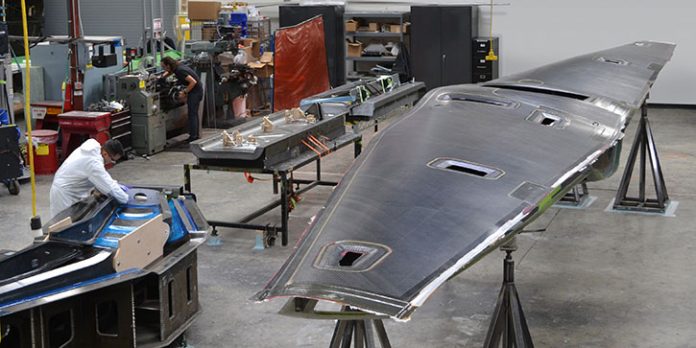
With progress made with the fabrication of the first flight demonstrator of the Tactically Exploited Reconnaissance Node (TERN) program DARPA has funded a second TERN technology demonstrator. Since DARPA awarded Phase 3 of the TERN program to a team led by the Northrop Grumman Corporation, the program made significant advances on numerous fronts. Milestones included commencement of wing fabrication, completion of successful engine testing for its test vehicle and progress with the system integration. “DARPA has been thinking about building a second TERN test vehicle for well over a year,” said Dan Patt, DARPA program manager. “Adding the second technology demonstrator enhances the robustness of the flight demonstration program and enables military partners to work with us on maturation, including testing different payloads and experimenting with different approaches to operational usage.” According to the agency, TERN is making substantial progress toward scheduled 2018 flight tests of prototype unmanned air system for small-deck ships.
Tern is currently scheduled to start integrated propulsion system testing in the first part of 2017, move to ground-based testing in early 2018, and culminate in a series of at-sea flight tests in late 2018. Wind tunnel tests of a sub-scale model are underway at the 80’ x 120’ wind tunnel at the NASA Ames Research Center’s National Full-Scale Aerodynamics Complex (NFAC). Data collected during this test will be used to better characterize aircraft aerodynamic performance and validate aerodynamic models.
“We’re making substantial progress toward our scheduled flight tests, with much of the hardware already fabricated and software development and integration in full swing,” said Brad Tousley, director of DARPA’s Tactical Technology Office, which oversees Tern. “As we keep pressing into uncharted territory—no one has flown a large unmanned tailsitter before—we remain excited about the future capabilities a successful Tern demonstration could enable: organic, persistent, long-range reconnaissance, targeting, and strike support from most Navy ships.”
In the recent months, TERN has accomplished some significant technical milestones. Fabricating of wing and airframe components has been made with final assembly planned in the first quarter of 2017. Once complete, the airframe will house propulsion, sensors, and other commercial off-the-shelf (COTS) systems to make up the full-scale technology demonstration vehicle.
In Phases 2 and 3, Tern has successfully tested numerous modifications to an existing General Electric engine to enable it to operate in both vertical and horizontal orientations. TERN will use a proven engine already matured with multiple helicopter platforms currently in use.
TERN System integration is already underway at the Software Integration Test Station (SITS), part of the System Integration Lab that supports software development for the program. The test station includes vehicle management system hardware and software and uses high-fidelity simulation tools to enable rapid testing of aircraft control software in all phases of flight. The SITS is helping ensure the technology demonstration vehicle could fly safely in challenging conditions such as launch, recovery, and transition between horizontal and vertical flight.
The TERN full-scale technology demonstration program envisions a new medium-altitude, long endurance UAS that could operate from helicopter decks on smaller ships in rough seas or expeditionary settings while achieving efficient long-duration flight. To provide these and other previously unattainable capabilities, the Tern Phase 3 design is a tail-sitting, flying-wing aircraft with a twin contra-rotating, nose-mounted propulsion system. The aircraft would lift off like a helicopter and then perform a transition maneuver to orient it for wing borne flight for the duration of a mission. Upon mission completion, the aircraft would return to base, transition back to a vertical orientation, and land. The system is sized to fit securely inside a ship hangar for maintenance operations and storage.
A joint program between DARPA and the U.S. Navy’s Office of Naval Research (ONR), TERN seeks to greatly increase the effectiveness of forward-deployed small-deck ships such as destroyers and frigates by enabling them to serve as mobile launch and recovery sites for specially designed unmanned air systems (UASs).
DARPA and the Navy have a Memorandum of Agreement (MOA) to share responsibility for the development and testing of the Tern demonstrator system. The Marine Corps Warfighting Laboratory (MCWL) has also expressed interest in Tern’s potential capabilities and is providing support to the program.



















